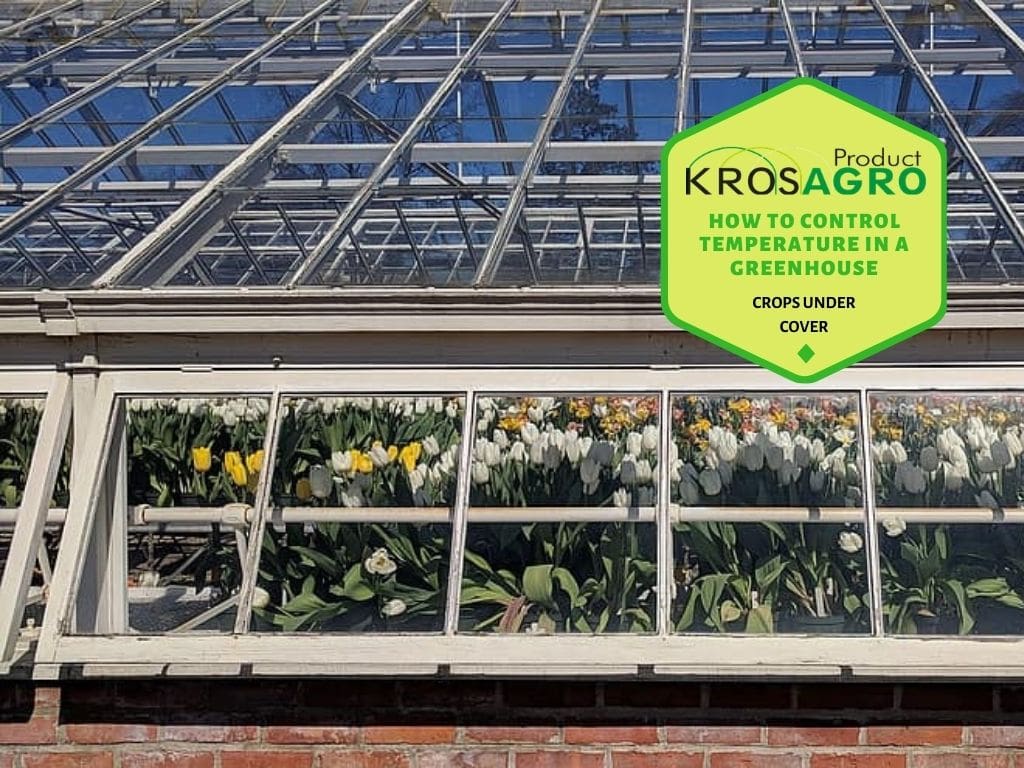There are various ways on how to control temperature in a greenhouse, such as natural or artificial ventilation, shading, and water regulation. Temperature is one of the factors that affect a plant’s condition.
In fact, plants are so sensitive to their temperature that they get affected by the average daily temperature, the day and night temperature, and extreme temperatures, usually based on their habitat.
Plants have temperature conditions that have to be met when growing them all year round in a greenhouse. The ideal greenhouse temperature is 27°C to avoid any harmful effects on plants.
Contents
Temperature And Humidity
Growing plants in an artificial habitat mean that their growth solely depends on how you take care of them. From the amount of light you let in, the soil you choose, humidity, and the temperature.
Temperature and humidity are two especially sensitive factors that either drop or increase at a high-speed rate. That is why controlling these two factors would be a massive step in maintaining the effectiveness of your conservatory.
These tips on how to control temperature in a greenhouse are necessary to obtain the perfect temperature needed to avoid bruising and drying of plants. If you want to achieve the ideal nutritious crops, no matter the weather, keep reading!
4 Hacks To Control Greenhouse Temperature
When going to the beach or even just staying out in the sun, especially during summer, human skin is prone to irritation and drying. The result of sunburns, rashes, etc. That is why moisturizers and sunblock were invented to reduce the thermal damage to our skin. These innovations prevent our skin from drying.
Similar to humans, plants are sensitive to their surroundings. They are easily affected by the soil, light, and weather. These factors contribute to their growth and development. Remember, a healthy plant is needed for healthy food. Let’s learn the ways to keep them healthy!
#1 Natural ventilation
One of the most popular and more accessible ways to control temperature is to use natural means. This is commonly used due to electricity cost when you use fans, and this type of ventilation provides a more thorough cooling technique because the cool air’s direction is not only focused on one place.
Leaving passageways open to allow the escape of hot air is an effective way to prevent overheating. Spread the doors and windows wide open! Release the warm air and let the air circulate.
You should also consider the size of the vent and its location, greenhouse height, and also its orientation and the entire system’s operation.
#2 Artificial ventilation
Greenhouses are spaces enclosed by walls. Once solar energy enters these walls, they turn to infrared energy. Infrared energy can get in quickly but hard to get out. Therefore, artificial ventilation through fans is capable of using cold air to exhaust warm air.
Fans are very useful when it comes to regulating the temperature of greenhouses. They are simple machines with a wide range of uses. When they push warm air out, they also pull cold air in.
However, keep in mind that fans’ installation should be as high as 5 to 6 feet. And the ventilation should be situated in front of louvers and vents. Through this, air will be drawn over plants.
They provide moisture to keep plants from being dried out. Although several fans must also be installed at various rates, the speed should control the user.
#3 Use shade
Solar energy may help a lot in plant growth and provide necessities for plant survival, but everything must be in moderation. Too much solar energy may end up dehydrating the plant and, of course, may not thoroughly complete development and produce the nutrients we need.
Since solar energy increases temperature a lot, you can use shades to limit heat permeation through the glass or plastic sheeting. You may use a cloth or even overgrowing vines on the roof!
#4 Regulating with water
The internal structure of plants uses water to regulate its own temperature. This is where the process of transpiration comes in. Transpiration is the loss of water vapor through the leaves. When water evaporates from the leaves, it leaves a cool feeling to the plants.
Constantly spraying mists into plants will remove warm air and keeps plants from dehydration. Another advantage of this hack is the lesser cost compared to artificial ventilation. However, please take caution! Too much moisture may start the growth of algae, as well as fungus and bacteria.
Conclusion
Once you have finished learning, you may perform these tasks and improve your greenhouse setting. Do these hacks with precision and take caution, for there is a considerable possibility of overdoing it. Everything must be in moderation. Too much may end up being a hazard to the plants instead of helping them.
Greenhouses are structures specifically designed for trapping heat. Making solar energy one of the most significant influences in its internal temperature. These tips are necessary data to make money spent on the entire conservatory worth it.
We hope you were able to pick up some info on how to control the temperature inside a greenhouse. Now, go and produce supreme quality plants in any season!
